Every time we have new foreigners on the team I take them on a walking tour of Phnom Penh. We start near the Royal University of Phnom Penh which is one of the few public green spaces in the city and historically hosted many MCC volunteers.
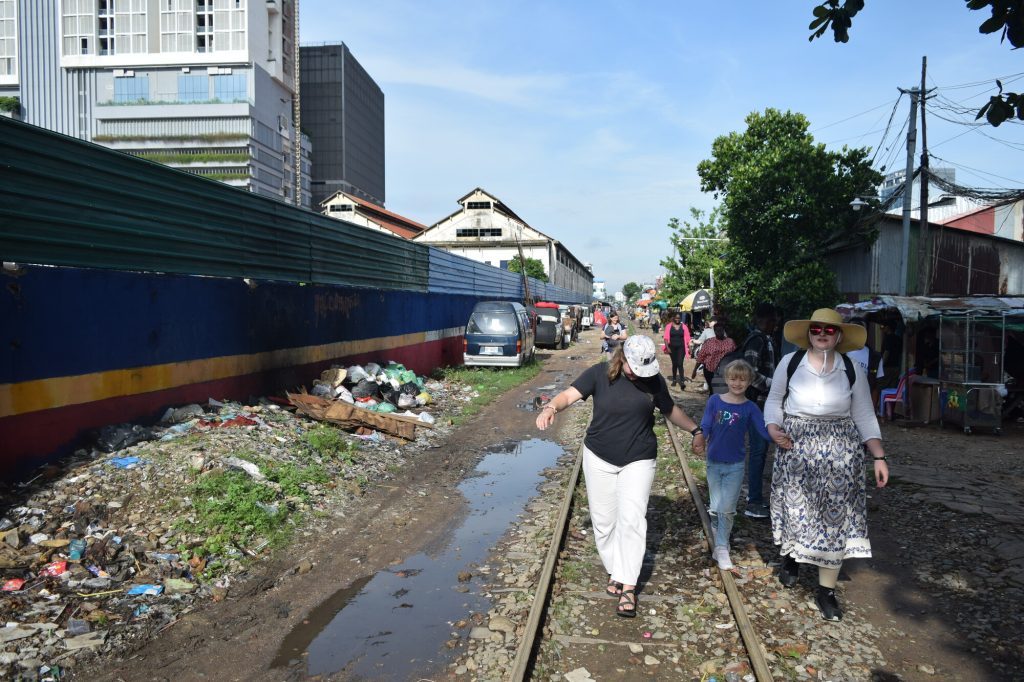
Then we walk along the railroad tracks through a poor neighborhood. This shows people the kind of communities where their street vendors and tuk-tuk drivers live, while the luxurious new high rises towering around us highlight the wealth disparity. I also talk about the history and realities of ‘squatter’ communities in Cambodia, given that very few people had land ownership documents after the Khmer Rouge period.

We come to a curve in the railroad tracks where it once bordered the Boeung Kak lake. We talk about the environmental impacts of the lake being leased and fill-in for development, as well as the impact on the estimated 17,500 residents who were displaced as part of this process. Turning a corner, we leave the poor neighborhood and walk pass a row of supercar shops – Maserati, Ashton Martin, Lamborghini, and others – to a large open space with only a few high rises and a mall. This is the filled in Boeung Kak lake. Then we turn east, talking about more about the development and infrastructure in this area.
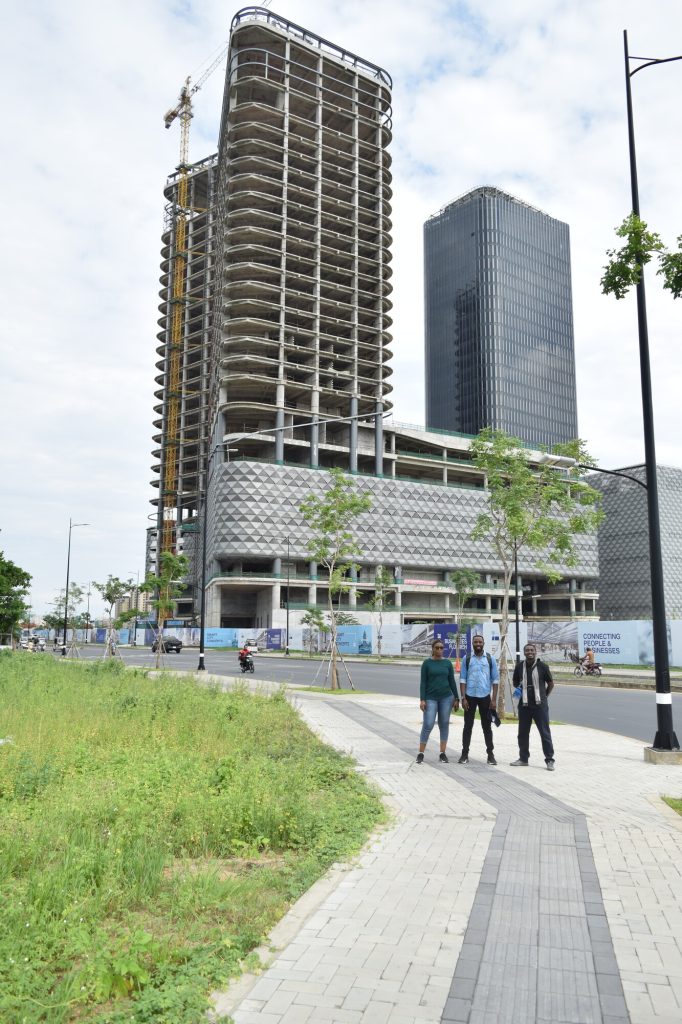
Soon we come to Phnom Penh’s Railroad Station. There was once a park stretching from the railroad station all the way down to the waterfront, which brought cool breezes to the apartment buildings lining it. We stop to take a look at these buildings and talk about tropical architecture before air conditioning. I make note of Pharmacie De La Gare on the corner; which is one of the best pharmacies in the country and often has medication/equipment that can be difficult to find otherwise (like EpiPens).
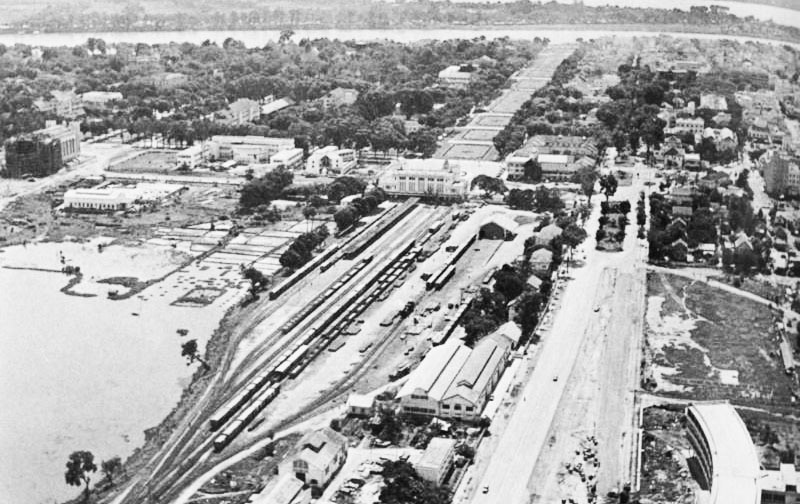
I point out the Vattanac Capital skyscraper as we pass it; this was the tallest building in Phnom Penh when I left in 2009 and was one of only two skyscrapers in the city, the other being the nearby OCIC Tower. Today, the Vattanac Capital building is the fourth tallest in Phnom Penh but it is far from alone – the city is full of high rises. Turning down a shaded street lined with massive trees we walk around the United States Embassies (no photos allowed) and come to the namesake of Phnom Penh – Wat Phnom.
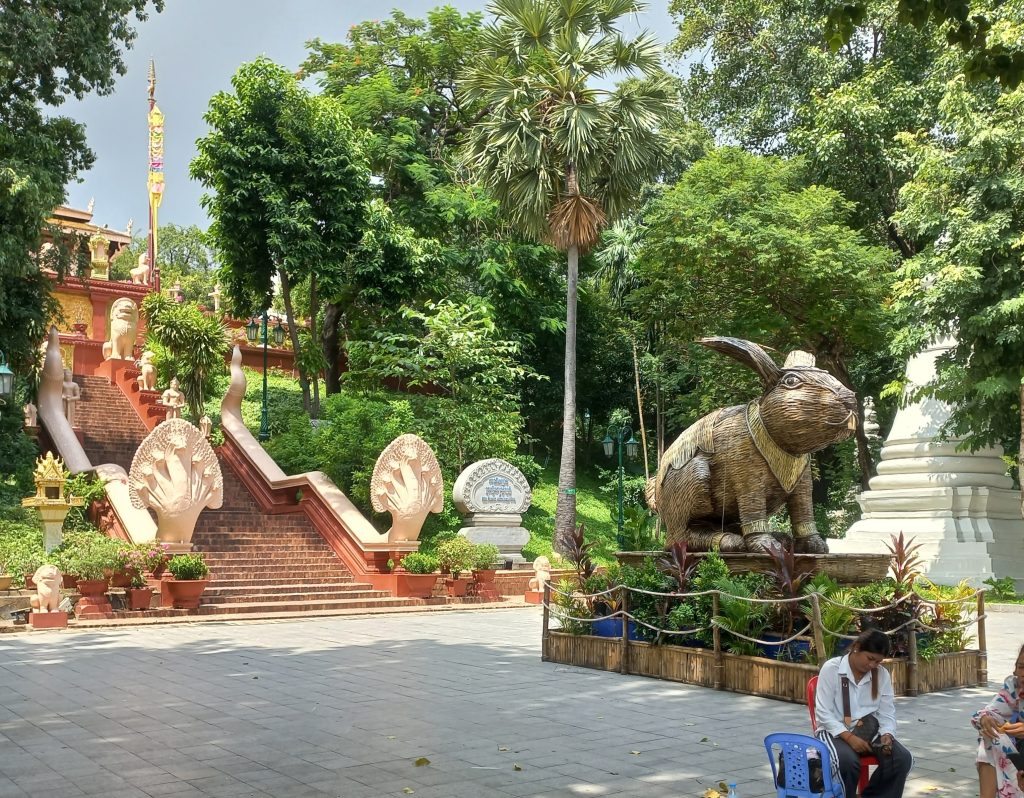
I explain the history of Phnom Penh, as well as talking about local cultural practices like the giant zodiac animal effigies, and then we stop for a break at the MK Cafe near the Wat Phnom Library. MK, short for MondulKiri, is a brand of local coffee that has been around for a long time. It’s a Christian business and I appreciate that they promote local coffee. So many cafes have begun serving off-brand Starbucks or Nescafe, which makes me sad because Cambodian coffee is delicious (and my favorite). I also note where the Phnom Penh Cathedral use to be before the Khmer Rouge destroyed it. We don’t go into Wat Phnom to visit the Pagoda or Museum, because that’s something they usually do with their Khmer language teacher near their ‘graduation’ from the first round of classes.
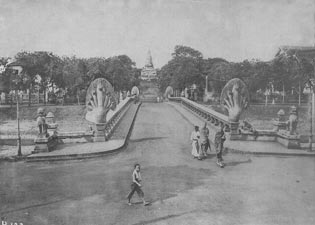
Next we head south – passing the excellent Sosoro Museum which I encourage them to visit – and stop to talk about the cultural significance of Naga imagery by what was once the Le Pont Des Najas or Naga bridge.
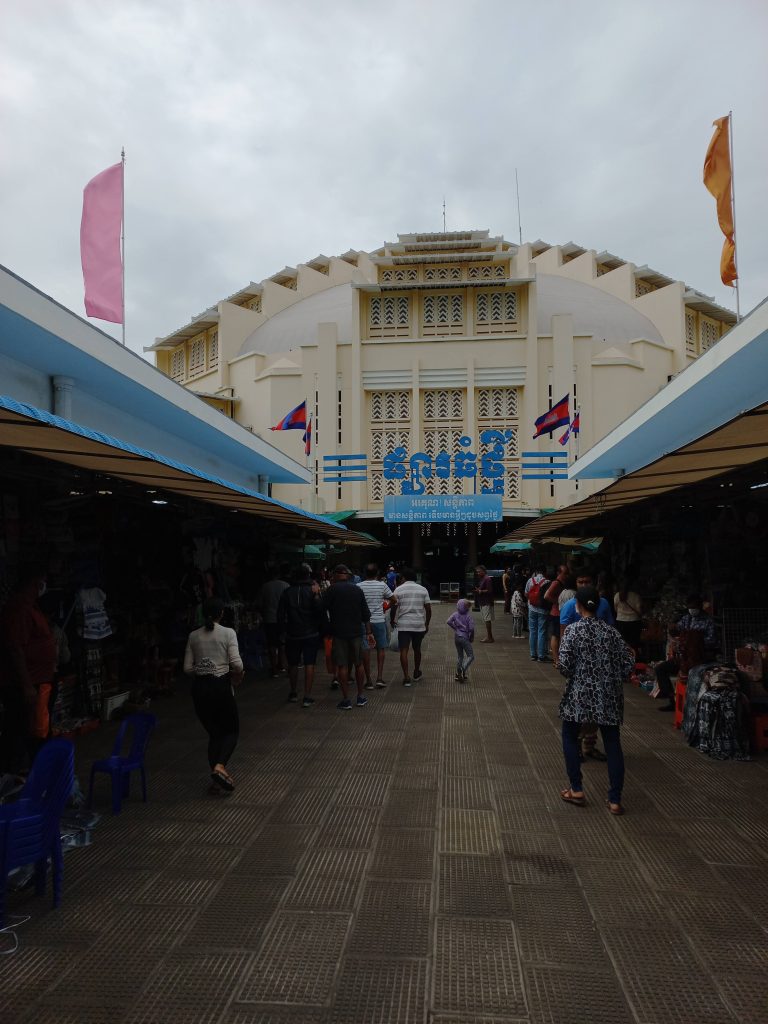
We through the old city to my favorite building in Phnom Penh, the domed Central Market. Here we, again, revisit the topic of tropical architecture before air conditioning. Then we leave by the southern exit.

We head south half a block towards the Sorya Mall. I explain that Sorya was the second mall built in Phnom Penh and that it was the tallest building in the city when I first arrived in 2006. It’s now dwarfed by it’s surroundings now but at one point the blue dome was a significant landmark.
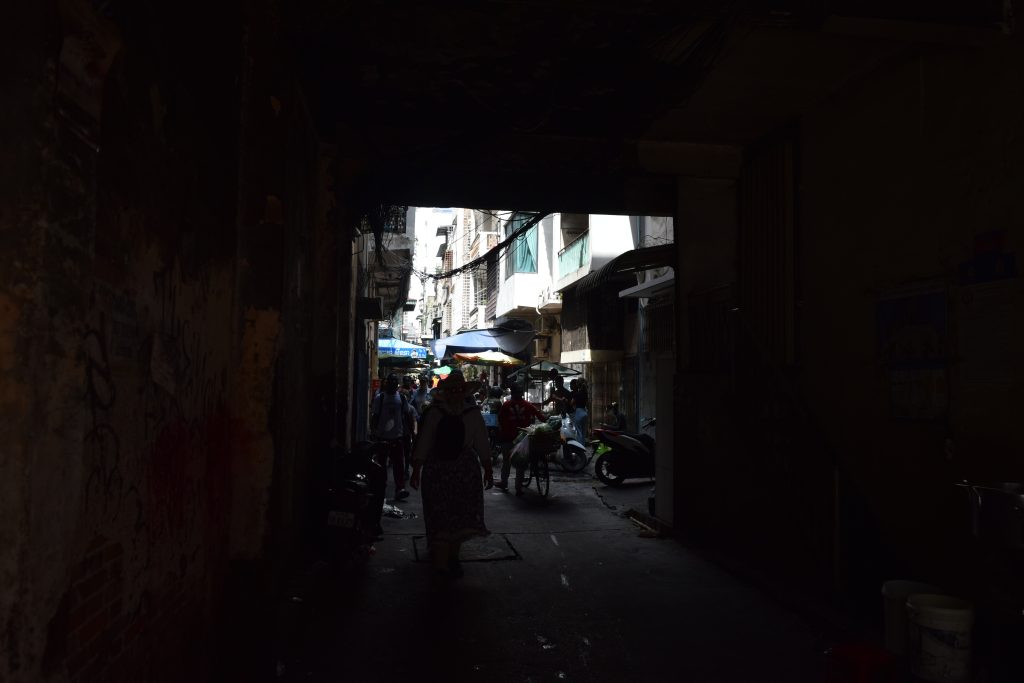
We don’t continue to Sorya but head down an alley that’s half tunnel behind, between, and underneath old apartment buildings. Here we talk about how each of these buildings is basically a village unto itself and how impossible it would have been for the Khmer Rouge troops to forcibly remove the population of Phnom Penh in 1975. Instead, the Khmer Rouge told the population that the Americans were going to bomb the city and convinced them to willingly leave ‘temporarily’. Like the apartments near the railroad station, these block apartments were designed for a city that had breezes. As the city built up, blocking the wind, they became ovens in the tropical heat. Now the individual apartments are dotted with air conditioning units to make them livable in the current environment.
If you’re interested in a closer look at what life looks like in these urban apartment villages, there’s a 2021 Cambodian film drama titled White Building that’s focused on life in one of them.
From the Central Market, we walk to the waterfront passing the Old Market and through the ‘seedy’ backpacker part of town. This is where I emphasize earlier talks with the men about good behavior and what to avoid in the tourist areas of Cambodia.
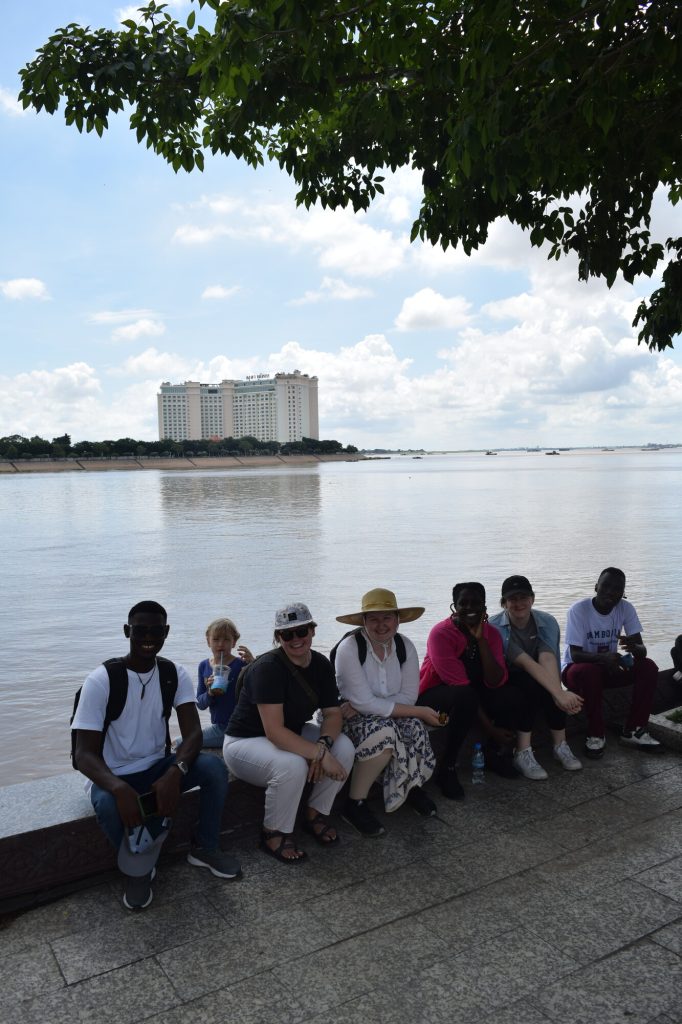
The cool breeze coming off the Sap river comes as a great relief on reaching the waterfront. We usually take a short break in the shade here while I explain the reversal of the Sap river, water festival, and talk about the environmental impacts on the river of sand dredging, damming, overfishing, and climate change. In 2019, the reversal of the Sap river only lasted six weeks.
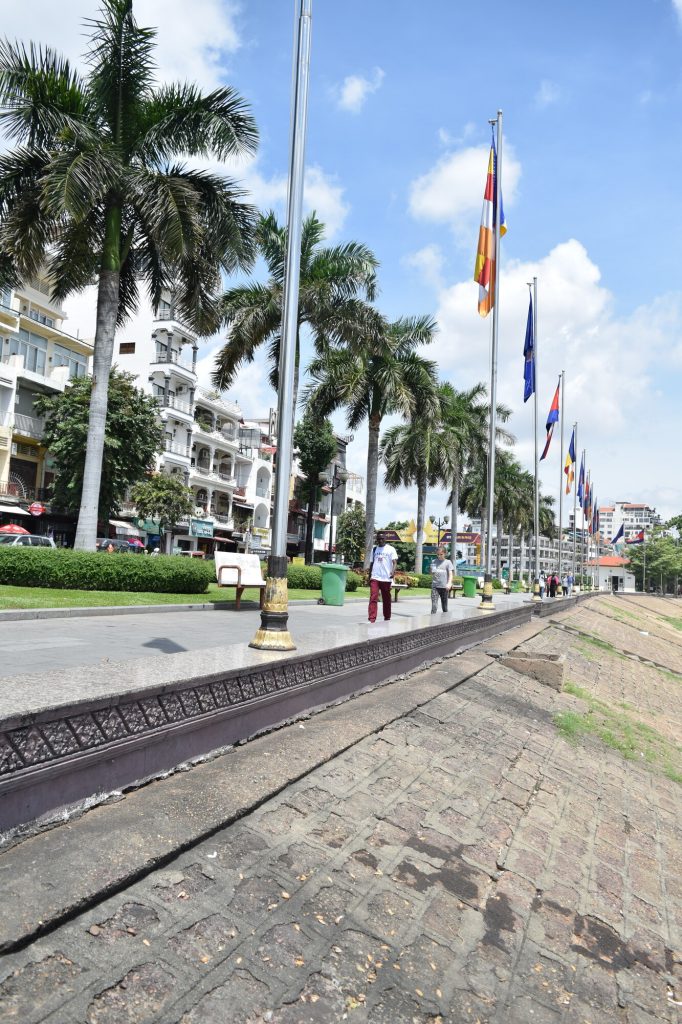
Walking south along the waterfront, we stop to look at the Japanese built anti-flood system that compensates for the loss of Boeung Kak lake and protects northern Phnom Penh from regular flooding. We also talk about the former Foreign Correspondence Club, Ounalom Monastery, Royal Palace, National Museum, UNESCO office, and other landmarks.
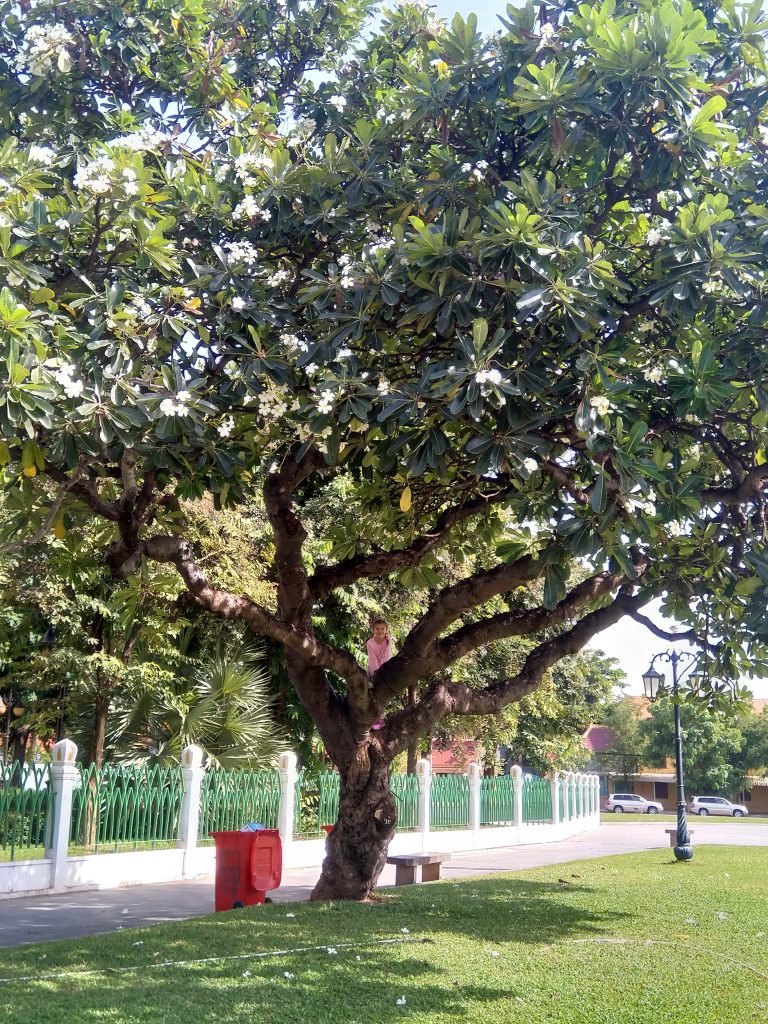
Arriving at the Royal Palace, we continue south to Wat Batom stopping along the way to point out the National Assembly and the monument commemorating the 16 pro-democracy demonstrators who were killed in a grenade attack in 1997. I usually explain the cultural significance of the frangipani flower when we come to Charlotte’s favorite tree in the city.
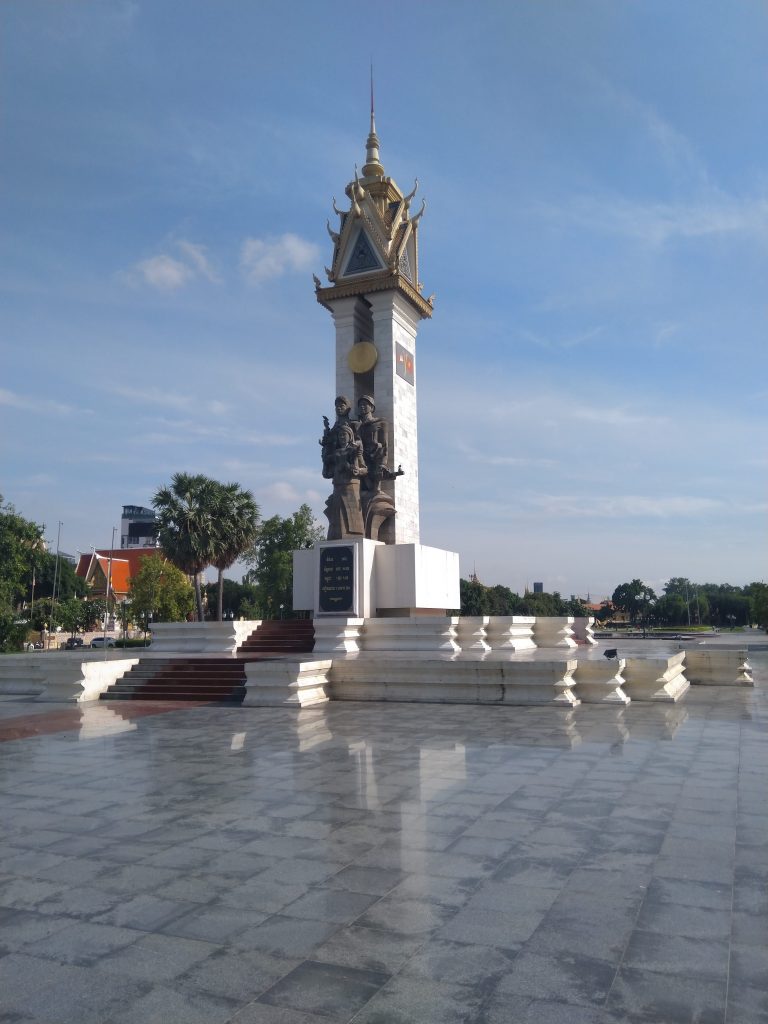
Continuing our walk, we pass the Cambodian-Vietnam Friendship Monument and talk about the tense history between the two neighbors.
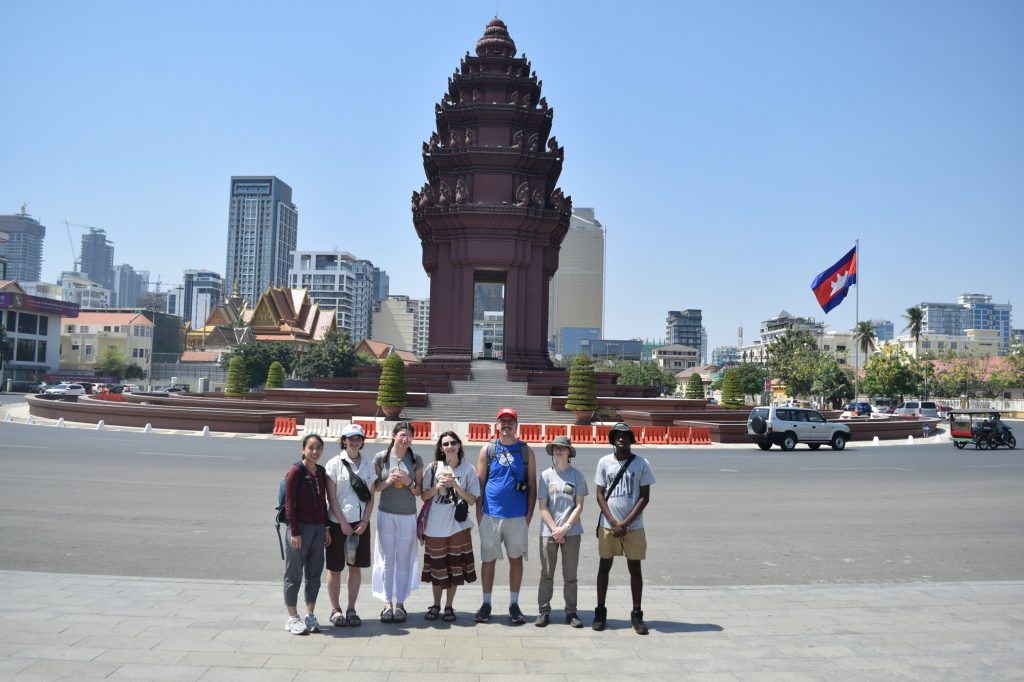
We head west, passing the North Korean embassy, before coming to the Independence Monument where we do group photos. I also point the way to Monument Books, Cambodia’s first English language bookstore post-Khmer Rouge, a couple of blocks north of the monument.

Depending on the group, I sometimes also include Orussey Market and the Family Bookstore. These are Cambodia’s largest traditional market and Cambodia’s first Christian Bookstore respectively. We also make it a point to stop and count how many floors of the high rise buildings around us are occupied. For long term volunteers we point out the international grocery stores.
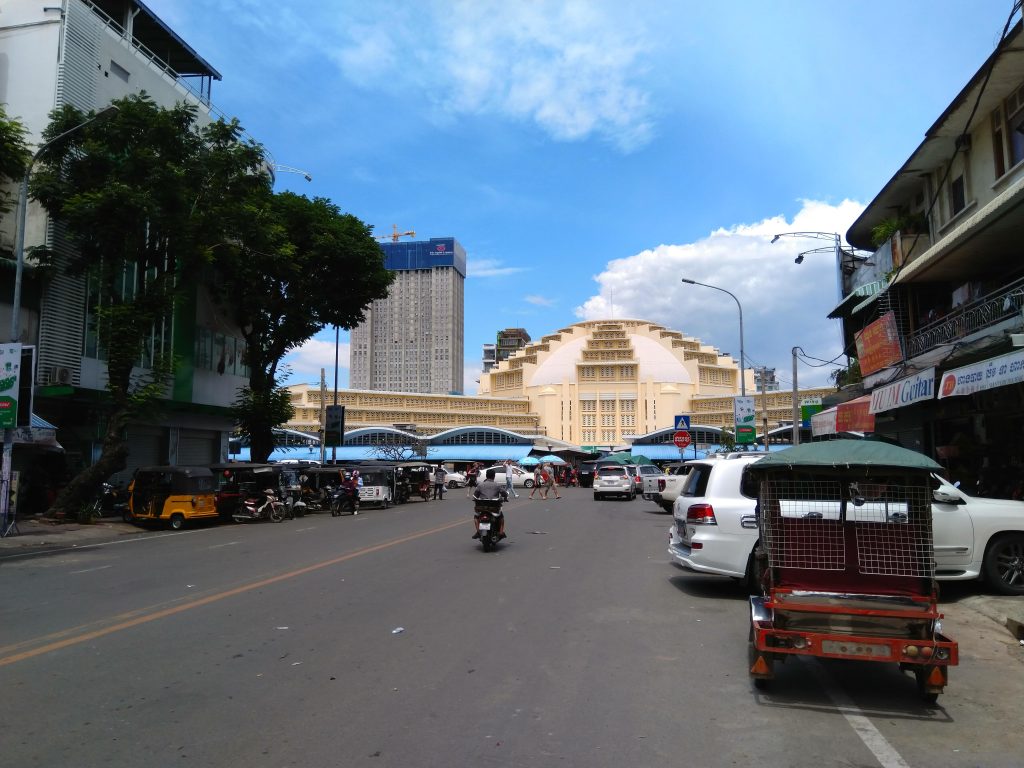
So thanks for coming along on a virtual walking tour of Phnom Penh. Of course we see a lot more than what’s included here on our walk and there are often all kinds of conversations and questions about life in Phnom Penh. If you ever want the full experience just come over and I’d be glad to take you for a walk.
That’s an impressive tour! How many hours and miles (kilometers) do you walk…all day? I’m sure you take some time to sample some local food and drink along the way. Thanks for taking us along!
Hi Pastor Mike,
We’ve settled into a five hour walk, with two long sit-down breaks, that starts around 7AM and ends around Noon. I tried longer walks initially, but it was too much. Most of our new foreigners are not use to tropical heat/humidity and there’s often people in the group who are not use to long walks. The sun also gets quite hot by noon so that’s hard on people who haven’t acclimated yet. I don’t personally keep track of distance but last year someone said we walked 7 miles. We do stop at street vendors and shops along the way, plus the two longer stops at cafes and lunch at the end.
Great walk! Thanks!
Nice walking tour – I suppose you know that several SALTers lived with a host family along the railroad tracks you walk on?
Hi Larry,
I knew that SALTers had lived in host families near there but I didn’t know it was along the railroad tracks. I’ll look in the old records and see if I can figure out which house, then I can say hello next time.
God bless,
Charles
Both Andrea and Tim Shellenberger lived there. I suspect they don’t live there anymore. The host father also did some woodworking and made a glider chair that used to be at the MCC office.
Thank you for the walking tour – it brought back a lot of memories!! Addionally several SALTers lived with a host family along the railroad tracks.